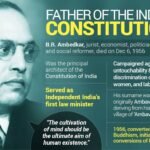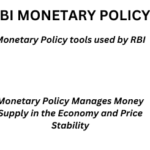Governor, State Government, and Constitutional Provisions

Recently the conflict arose, in Tamil Nadu Assembly, when the Governor made changes to the prepared speech he read out in the Assembly.in the recent past there are instances, especially in the opposition ruled states, where the governor had either reserved the bill for the President or withhold his assent.
Under Articles 175 and 176 of the Constitution the Governor is expected to address the first Assembly session of the state every year and the first session of a new legislature after the state assembly elections.
Pending Bills is a problem that even the Supreme Court cannot be expected to deal with:
“While the Supreme Court has repeatedly ruled that legislative power of governors is extremely limited and that governors are bound by the aid and advice of the cabinet, there is constitutional and judicial silence on how long a governor can keep a bill pending.
The Governor may give his assent to the Bill, or withhold assent, or send it back to the Assembly for reconsideration. But if the Assembly passes the Bill again, with or without amendments, and sends it back, the Governor will be left with no option but to give his assent.
There is a fourth alternative too available to the Governor. He may reserve the Bill for the consideration of the President of India. Instead of giving his assent, the President has the option to direct the Governor to send it back to the Assembly for reconsideration. The Assembly may reconsider and send it back with or without changes. But even in that case, the President may choose to withhold his assent, as the Constitution does not impose any time limit on him to take decisions in such cases.
LEARNING FROM HOME/ WITHOUT CLASSES/ BASICS
The Governor is the nominal head of a state, while the Chief Minister is the executive head. Lieutenant governors are appointed in Union Territories of Delhi, Andaman Nicobar Island and Pudducherry. All other union-territories are governed by an Administrative Head. The only exception is Chandigarh. The governor of Punjab is also the lieutenant governor of Chandigarh. The first woman to become a Governor of a state in India was Sarojini Naidu. She was the Governor of Uttar Pradesh from 15 August 1947 till her demise on 2 March 1949.
Article 153 of the Constitution requires that there shall be a Governor for each State. One person can be appointed as Governor for two or more States.
Article 154 vests the executive power of the State in the Governor.
Article 155 says that “The Governor of a State shall be appointed by the President by warrant under his hand and seal”.
Article 156 provides that “The Governor shall hold office during the pleasure of the President”. The term of the Governor is prescribed as five years.
Article 163- There shall be a Council of Ministers with the Chief Minister at the head to aid and advise the GovernorThe only qualifications for appointment as Governor are that he should be a citizen of India and must have completed the age of thirty-five years.
- The Sarkaria Commission, set up in 1983 to examine the Centre-State relationship on various points, felt that the Chief Minister should be consulted before appointing the Governor, for the proper working of the parliamentary system.
- The National Commission to Review the Working of the Constitution said, “It would be appropriate to suggest a committee comprising the Prime Minister, the Home Minister, the Speaker of the Lok Sabha, and the Chief Minister of the State concerned to select a Governor.
Of late, the relationship between Governor and the State government has metamorphosed into a confrontation, with the governor either refuses to sign bills passed by the state assembly or issuing veiled intimidation to an elected government.
Nabam Rebia judgement of 2016 ruled that Article 163 does not give Governors a “general discretionary power” as is often misunderstood.
“The area for the exercise of his (Governor) discretion is limited. Even this limited area, his choice of action should not be arbitrary or fanciful. It must be a choice dictated by reason, actuated by good faith and temper
One of the issues which may arise is whether or not the discretion of the Governor can be judicially reviewed by the Supreme Court. But a Constitution Bench judgement in 2006 in the Rameshwar Prasad case has held that the “immunity granted to the Governor under Article 361 (1) does not affect the power of the Court to judicially scrutinise the attack made to the proclamation issued under Article 361(1) of the Constitution of India on the ground of mala fides or it being ultra vires”.
It is an accepted principle that in a parliamentary democracy with a responsible form of government, the powers of the Governor as Constitutional or formal head of the State should not be enlarged at the cost of the real executive, viz. the Council of Ministers.
Raj Bhavan needs to get off its high horse and accept that it is not an ombudsman of the state government. And the state government needs to thicken its skin, not see in every Raj Bhavan missive a plot to topple it.
The Governor primary role as a sagacious counsellor is “to be consulted, to warn and to encourage”. Both governors and chief ministers, as constitutional functionaries, should respect each other and at least have a working relationship.
READ: Tamil Nadu Governor vs Stalin government: Does the governor have the right to delete portions of his address to the legislative assembly? | The Indian Express




0 Comments